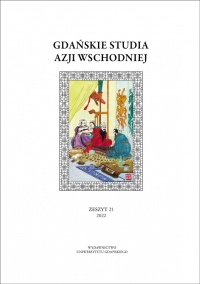Forma pisemna i elektroniczna umów w prawie singapurskim
Abstrakt
The article presents the complicated issues of concluding a contract in written and in electronic form, as well as meeting the requirements of the writing and signature by electronic record and electronic signature, respectively, in Singapore law. Singapore is an Asian pioneer in regulating e-commerce. Electronic Transactions Act (2010) is modern in nature, based on the principle of the functional equivalence of writing and electronic record as well as signature and electronic signature, and the principle of non-discrimination of messages and contracts in electronic form. Under Singapore law, “writing” includes print, typescript and other ways of presenting words in a visible form, while “signature” is any sign submitted by a signatory with the intention of signing and authenticating a document. The formal requirements for the writing and signature are minimal, the indicated terms have a very broad meaning, and the written form of the contracts has been regulated very liberally. As a consequence, Singaporean courts applied a liberal and, at the same time, functional approach in deciding whether the signature requirement was met by various types of electronic signatures and found that it was satisfied with, inter alia, keyboard electronic signature, i.e. the name written under the text of the declaration of will in the e-mail or SMS, and even the name that is part of the sender’s e-mail address, appearing in the header of the e-mail received by the recipient of the message.
Downloads
Bibliografia
Brazell L., Electronic Signatures Law and Regulation, London 2004.
Chia K., Singapore [w:] E-Commerce and the Law of Digital Signatures, ed. D. Campbell, New York 2005.
Fischer S.F., Saving Rosencrantz and Guildenstern in a Virtual World –A Comparative Look at the Recent Global Electronic Signature Legislation, „Boston University Journal of Science & Technology Law” 2001, vol. 7, no. 2.
Lambert J.B., The U.N. Convention on Electronic Contracting: Back from the Dead?, „Michigan State International Law Review” 2017, vol. 25, no. 1.
Maciejewska-Szałas M., Forma pisemna i elektroniczna czynności prawnych. Studium prawnoporównawcze, Warszawa 2014.
Mason S., Electronic Signatures in Law, London 2003.
Mik E., Certainty at last? A “new”framework for electronic contracting in Singapore, „Journal of International Law and Technology” 2013, vol. 8, no. 3.
Nicoll C.C., Singapore: The Intelligent Island, „EDI Law Review” 1999, no. 6.
Redd C., What is a Signature?, „The Journal of Information, Law and Technology” 2000, no. 3.
Rowland D., Macdonald E., Information Technology Law, London 2005.
Senq D., The Singapore Electronic Transactions Act and the Hong Kong Electronic Transactions Ordinance, „Digital Evidence and Electronic Signature Law Review” 2008, no. 5.
Tank H.S.K., The Impact of the Singapore Electronic Transactions Act on the Formation of E-Contracts, „Electronic Communications Law Review” 2002, vol. 9, no. 2.
Wah Teck J.C., Legal issues in e-commerce and electronic contracting: the Singapore position, Asean Law Association. 8th General Assembly, Singapore, 29 November – 2 December 2003.
Wong W., Singapore [w:] The Internet: Laws and Regulatory Regimes, ed. D. Campbell, Salzburg 2006.

 Uniwersyteckie Czasopisma Naukowe
Uniwersyteckie Czasopisma Naukowe





